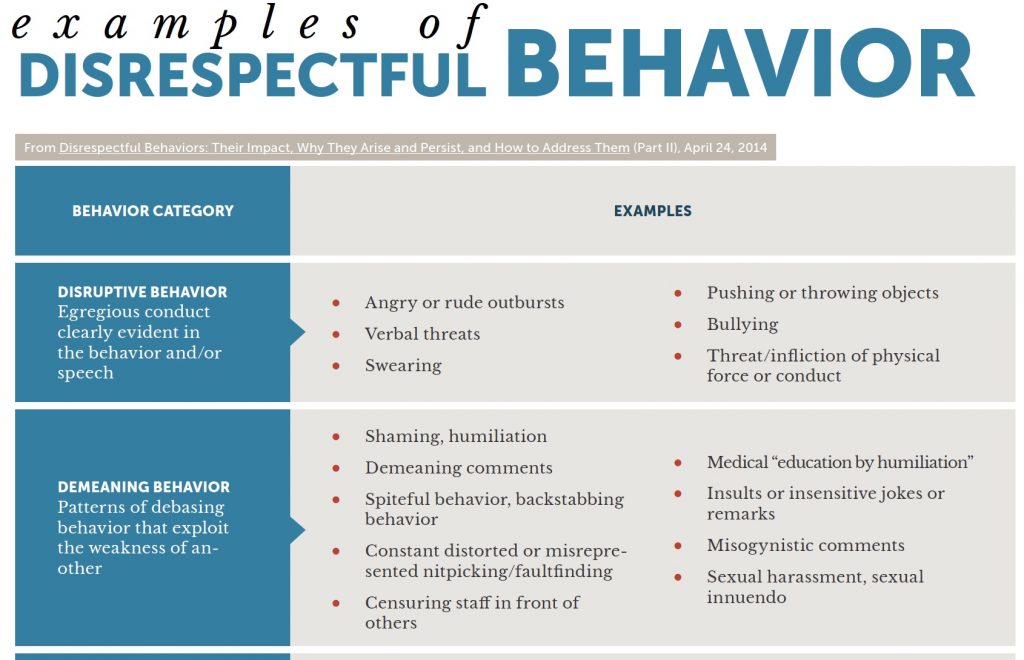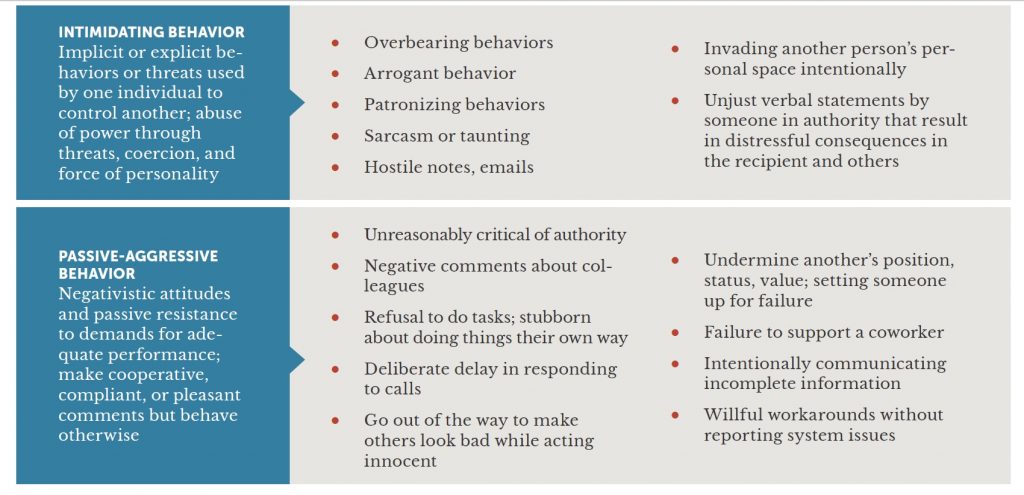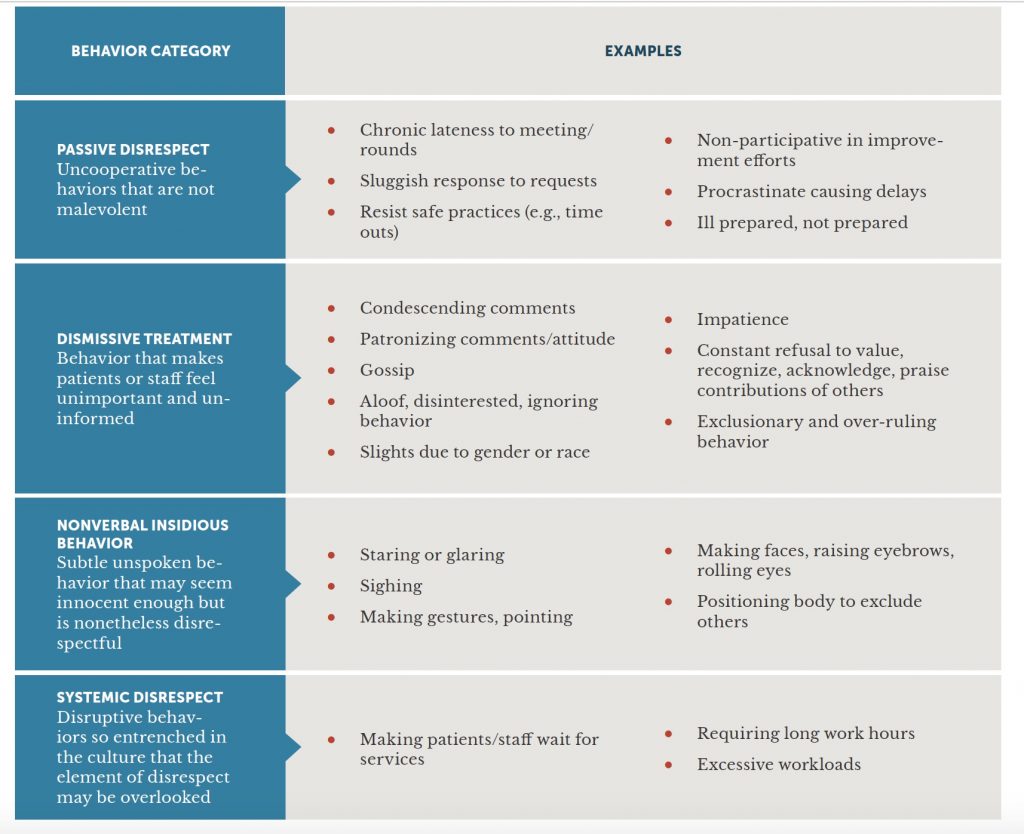What Can Be Done About Disruptive Behavior?
What Can Be Done About Disruptive Behavior?
Of the nearly 5,000 health care professionals ISMP surveyed in 2013, only 25% felt their organization dealt effectively with disruptive behavior. Most experts agree with that assessment, noting that few institutions have successfully implemented comprehensive and consistent approaches that address all three components of the problem: the need to foster teamwork, to create an institutional culture of safety and to help disruptive individuals learn to function within professional boundaries.
Fostering teamwork and collaboration. It is widely agreed that the more effectively everyone involved in patient care—from surgeons to housekeepers—works together, the better the outcome. Yet too often, hospitals do not actively foster teamwork. They provide workshops and seminars on topics ranging from sexual harassment to informed consent. But sustained, proactive efforts to break down barriers between disciplines, facilitate open and honest communication among team members and generally build trust are few and far between.
Interest is growing, however, and various approaches have been developed to foster teamwork in the stressful environment of modern health care. Among these are:
- CRM (Crew Resource Management) training: After a spike in fatal accidents, the aviation industry pioneered a training program to improve teamwork and facilitate effective communication among crew members. The results were stunning. On average today, there is just one fatality for every 7 million flights worldwide. Several studies have shown how health care teams can benefit from the same sort of training.
- TeamSTEPPS (the Team Strategies and Tools to Enhance Performance and Patient Safety program): Developed by AHRQ and the U.S. Department of Defense to support effective communication and teamwork in health care, this approach offers a comprehensive curriculum and training program, including hands-on training through regular meetings and conferences as well as an online toolkit with an implementation guide, training materials, and measurement tools.
- AI (Appreciative Inquiry): Instead of focusing on what’s gone wrong, AI focuses on what’s working well. Team members throughout the hierarchy meet together to share what they appreciate about each other’s efforts and explore ways to build on success. Several health care institutions have found this approach extremely helpful.
Creating a culture of safety: There is no shortage of advice or support for institutions that want to create a culture of safety. The suggestions offered in the Joint Commission’s 2008 Sentinel Alert include:
- Create a code of conduct and enforce the code “consistently and equitably among all staff regardless of seniority or clinical discipline in a positive fashion through reinforcement as well as punishment.”
- Implement a policy of “zero tolerance” for intimidating and/or disruptive behaviors, and “incorporate the policy into medical staff bylaws and employment agreements, as well as administrative policies.”
- Develop policies and procedures for “reducing fear of intimidation or retribution and protecting those who report or cooperate in the investigation of intimidating, disruptive and other unprofessional behavior.”
- Don’t rely on ad hoc reporting of disruptive incidents. Instead develop and implement “a reporting/surveillance system for detecting unprofessional behavior… and monitor system effectiveness through regular surveys, focus groups, peer and team member evaluations, or other methods.”
- Support surveillance with tiered interventions, beginning with non-adversarial conversations directly addressing the problem and moving toward detailed action plans and progressive discipline, if patterns persist. The focus of these efforts should be on “building trust, placing accountability on and rehabilitating the offending individual, and protecting patient safety.”
Fostering professionalism: There are a range of options for helping disruptive individuals, depending on the situation:
- Anger management training helps people learn to recognize when they are becoming angry and, as Caldicott says, “learn what to do when you feel that storm raging inside you.” The goal isn’t to prevent or bottle up anger. According to the Mayo Clinic, “Anger is a normal, healthy emotion when you know how to express it appropriately — anger management is about learning how to do this.”
- Mental health and substance abuse counseling: Expert counselors— Including social workers, psychologists, psychiatrists and professionals trained in addiction medicine—are the best option for those whose disruptive behavior is rooted in mental health or substance abuse issues. Physician Health Programs “help addicted physicians get the drug, alcohol and mental health treatment they need to keep their license and return to practice,” according to the Physician Health Program website.
- Remedial education: By definition, disruptive health care professionals are boundary violators, unable to function effectively within the prescribed boundaries of professional behavior. Remedial courses like those offered by PBI help these individuals confront their behavior and its impact on others, identify the underlying issues and develop strategies for preventing future problems.
A “culture of safety” that encompasses these key features:
- Acknowledgment of the high-risk nature of an organization’s activities and the determination to achieve consistently safe operations
- A blame-free environment where individuals are able to report errors or near misses without fear of reprimand or punishment
- Encouragement of collaboration across ranks and disciplines to seek solutions to patient safety problems
- Organizational commitment of resources to address safety concerns
—Agency for Healthcare Research and Quality



